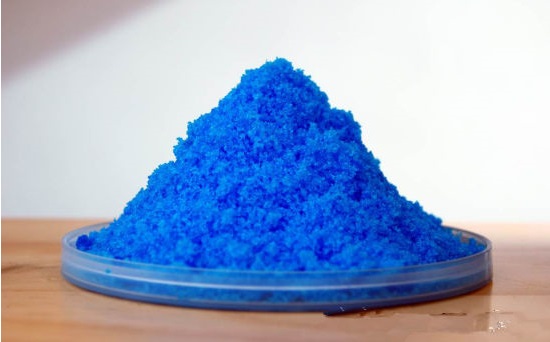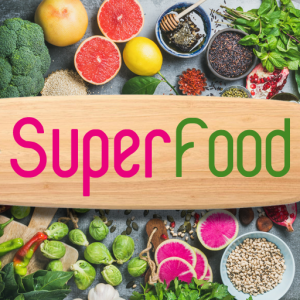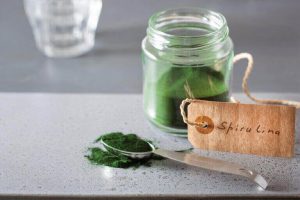What is phycocyanin?

Phycocyanin is a blue pigment that exists in two groups of algae and cyanobacteria, including Spirulina. This pigment has various biological activities and has various applications in the food, cosmetic and pharmaceutical industries. Many advances have been made to produce phycocyanin on a large scale, but most of the methods are difficult and can be done with high costs; In case, the synthesis and expression of phycocyanin in the form of recombinant is a cheap method and its purification can be done more easily.
Photosynthesizing organisms use photoreceptors to convert sunlight energy into the materials they need. For example, chlorophylls and carotenoids, in addition to these pigments, blue-green algae have organs called phycobilisomes in which phycocyanin is placed
Phycocyanin comes from the Greek language where Phyco means algae and Cyan from the English word meaning blue green which itself comes from the Greek word Kyanos meaning dark blue. This pigment helps the algae to absorb more spectrum of sunlight. slow Unlike chlorophyll, phycocyanin is soluble in water, and therefore it is not located in the thylakoid membrane, but it is located on the membrane in an organ called phycoblysomes. This pigment is made of protein and absorbs orange and red light spectrum well. . Phycocyanin can withstand a high temperature range as well as a greater pH range, this pigment has a fluorescent property. Phycocyanins are divided into two groups, C, which is related to blue-green algae, and R, which is related to red algae. Each of which has different types.
Properties of phycocyanin
Phycocyanin, which is a pigment-protein complex from the family of light-absorbing phycobiliproteins, contains allophycocyanin and phycoerythrin. It is a light blue pigment that absorbs orange and red light at wavelengths of 620 nm and emits fluorescence at approximately 650 nm. People in Mexico harvest Arthrospira for food. Arthrospira platensis (spirulina) has attracted a lot of attention due to its nutritional and medicinal properties. Phycocyanin (C-PC) is also a water-soluble compound found in cyanobacteria and up to 15% of S. platensis proteins. Phycocyanin has antioxidant, anti-cancer and anti-inflammatory properties. According to research, polysaccharides and phycobiliproteins from certain algae species can inhibit the growth of tumor cells. Phycocyanin extracted from S. platensis has shown health benefits such as improving the function of the immune system, regenerating zooblasts and inhibiting the growth of cancer cells. Therefore, it is necessary to use phycocyanin as a functional food to fight or prevent cancer and as a rich supplement. be used with antioxidants. Recently, it has also been reported to have the property of lowering blood pressure levels through a dependent mechanism.
Phycocyanin absorbs light at about 620 nm and emits fluorescence at about 640 nm. The purity of C-PC is usually evaluated using the absorbance ratio A620/A280, and a purity of 0.7 is considered as food grade, the absorbance at 620 nm represents the maximum absorbance of C-PC, while at 280 nm, it is the amount due to the presence of other proteins in solution. The purity of C-PC is relative to the contamination of other proteins if present in the same sample.
Applications of phycocyanin
Phycocyanin is actually a blue natural food coloring that can be used as a functional food ingredient with health benefits and as a natural dye. For dairy products, it can be used in additives such as color with stabilizers and emulsifiers during the manufacturing process. Given that the biological safety of food is at risk due to the addition of artificial additives and artificial colors in food, because it sometimes inhibits the absorption of some nutrients and there is also the possibility that it may cause allergic reactions. Also, sometimes artificial additives give an unpleasant taste and color and can destroy the vitamins in the food. The use of sustainable and environmentally friendly chemicals and its availability as dyes are very limited due to the lack of alternatives and low dyes. Also, excessive use of several natural plant extracts known as dyes has threatened the stability of the ecosystem. Hence, there is a need to search for alternative sources of natural dyes that are renewable and do not affect the balance of the ecosystem. In the meantime, phycocyanins are prone to become the best sources of natural colors due to their high growth rate, many color shades and the wide presence of algae in different weather conditions.
It is a great pleasure that many activities with the aim of increasing awareness of artificial colors have been placed in the work process of the world, especially in the field of environment and food and drug organizations. The tendency to combine natural ingredients in foods that increase the level of safety, along with the additional functional value that lies in these products, is very suitable for improving the quality of food. Also, phycocyanin from Arthrospira (Spirulina) can be used to enrich the nutritional value and also give natural color to dairy products, and it has this platform to cover a wide range of food formulas with cyanobacteria biomass, so that in the future It is widely added as an additive or supplement to cereals or salads. It should be noted that it is known and used as a natural and slimming food in the United States of America and Europe.
Roya Algae Pars Company is proud to provide advice and guidance to those interested in the production and breeding of spirulina and phycocyanin algae, which is one of the most important derivatives of spirulina.










